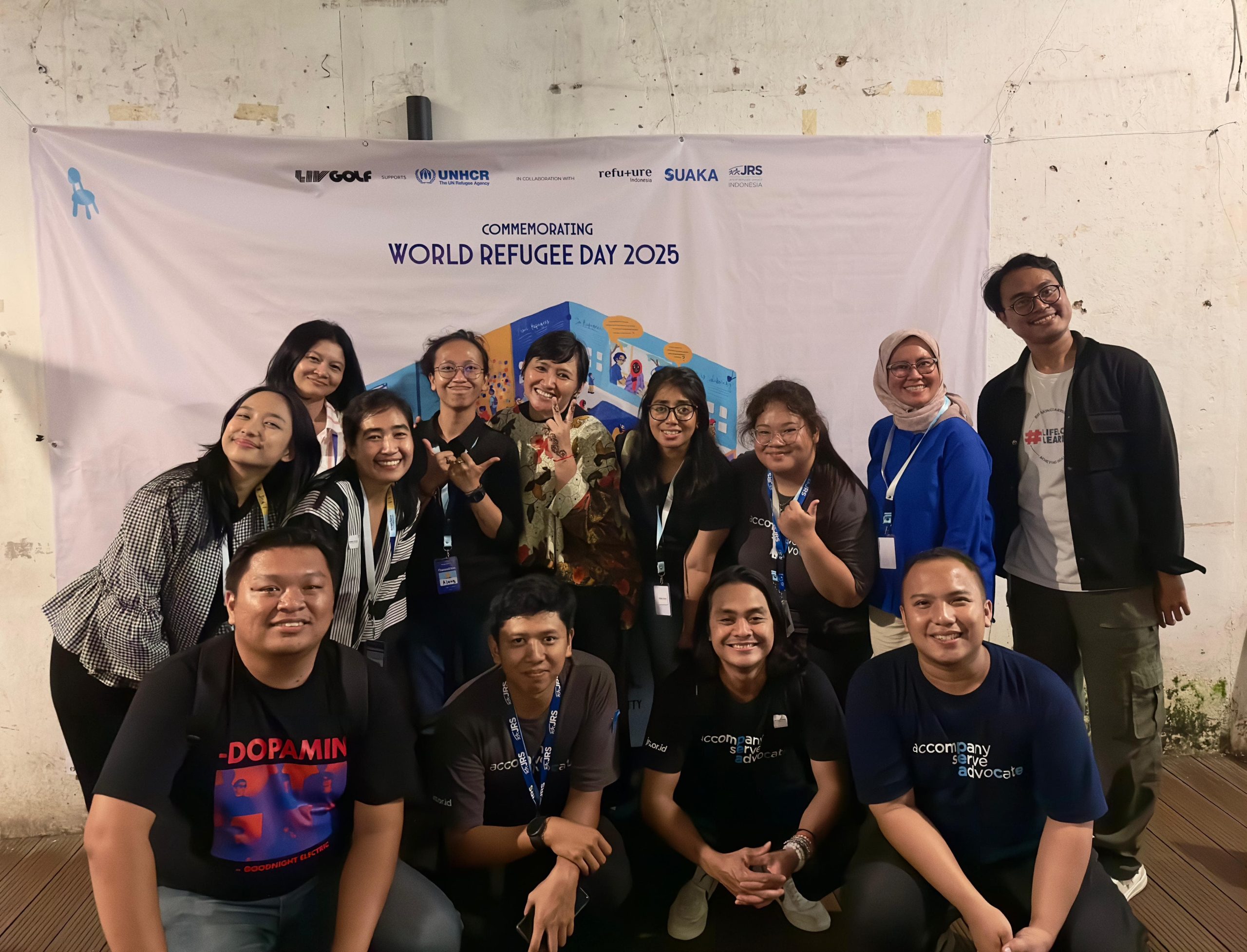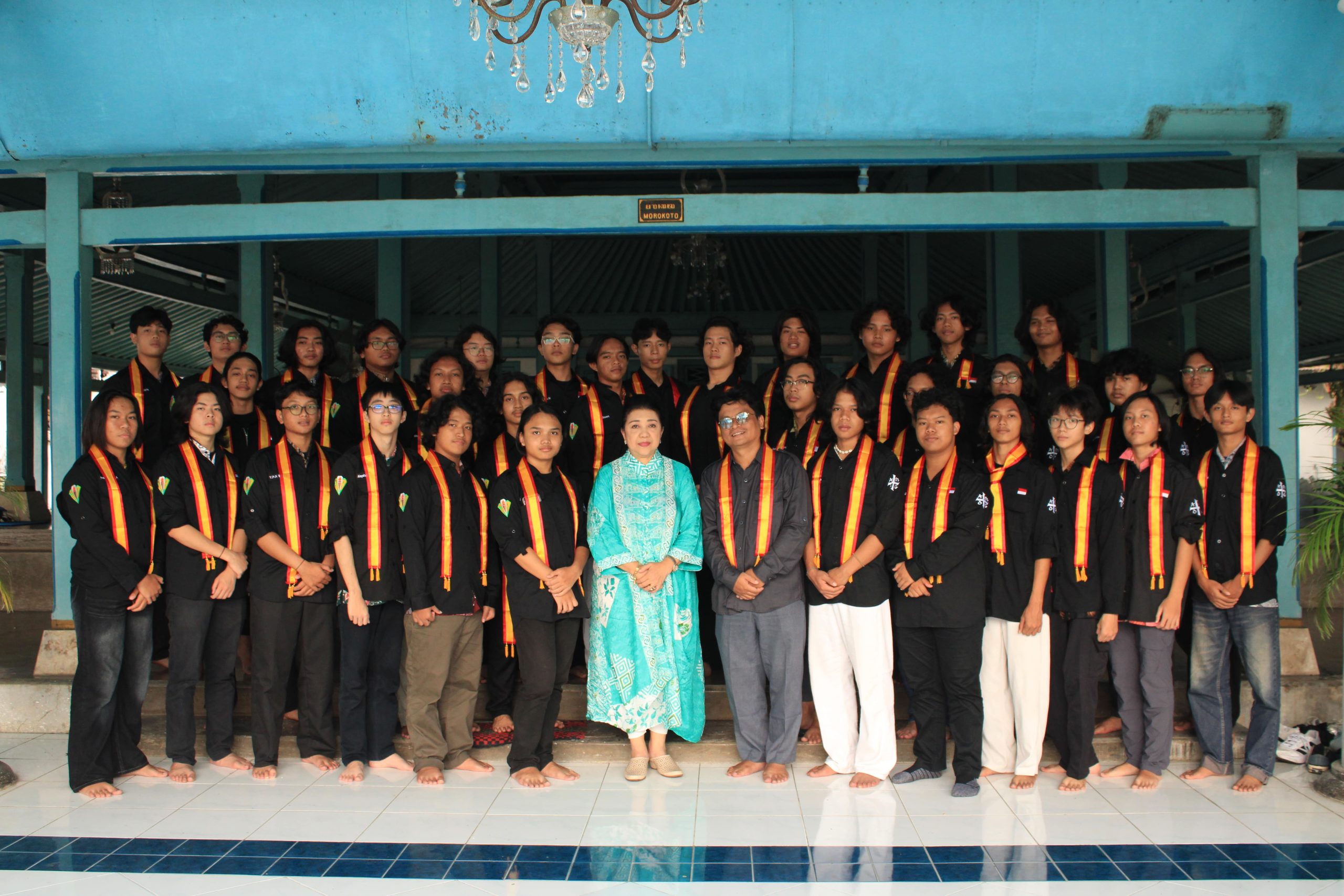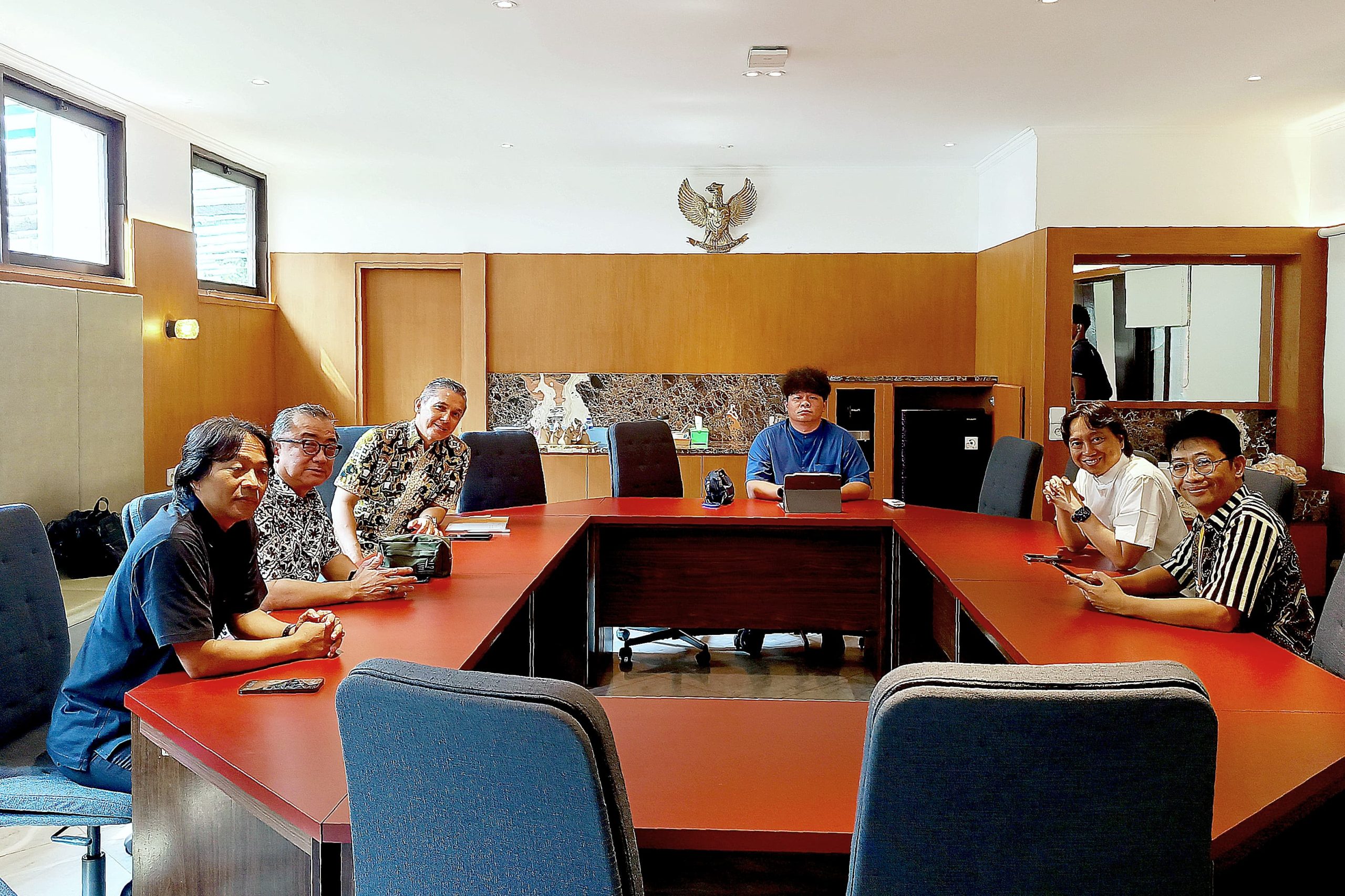On Saturday, January 18, 2025, a delegation of brothers from Kolese Hermanum visited the Mubarok Campus in the Parung area, West Java. Mubarok Campus is Indonesian Ahmadiyya’s center and serves as a “seminary” for prospective Ahmadiyya imams in Indonesia. There are 15 Jesuit scholastics from various countries accompanied by Father Guido Chrisna, S.J., and Mr. Buddhy Munawar, an Islamology lecturer at STF Driyarkara, who visited the Ahmadiyya community. This visit aims for the scholastics to understand better the Ahmadiyya Community, which is often persecuted by Muslims in general, and to foster in-depth interfaith dialogue.
Our visit was welcomed by the National Amir of the Indonesian Ahmadiyya Community (the leader of Ahmadiyya in Indonesia), Maulana Mirajuddin Sahid. During the opening ceremony of this visit, the National Amir advised us to constantly strive for dialogue with various parties to create harmony within the community. After the opening ceremony, we were invited to learn about the history and spirituality of the Ahmadiyya community in a building they call the Peace Center. When entering the Peace Center, we were shown photos of religious leaders from around the world (including Pope Francis), the founder of the Ahmadiyya Community and his successors, Indonesian national figures who are part of the Ahmadiyya Community, and the service works of Ahmadiyya in Indonesia.
The Ahmadiyya community has become the most discriminated and persecuted community in the Muslim world due to their differing beliefs, particularly regarding the concept of the Messiah and Prophet, which contrasts with the general beliefs of Muslims. Mirza Ghulam Ahmad founded this community in India in the 19th century. Ahmadiyah believes that the Messiah’s Second Coming has occurred and that the Promised Messiah is their founder. Although most of their beliefs are similar to those of Islam in general, their interpretation of the role of the Messiah has become a controversial point of difference. As a result, they are often considered non-Muslims by the broader Muslim community. The center of the Ahmadiyya community needs to be moved from Pakistan to London due to security issues.
The leadership of Mirza Ghulam Ahmad was continued by his successors, who were titled Khalifatul Masih. Now, the Ahmadiyya Community is led by Khalifatul Masih V, whose real name is Hazrat Mirza Masroor Ahmad. Khalifatul Masih V always calls for peace and love in his sermons. Love for all and hatred for none is the motto of the Ahmadiyya Community and is always carried and demonstrated by Khalifatul Masih V in every sermon.
After getting acquainted with their history and faith, the scholastics were invited to dialogue with the Ahmadiyya “seminarians.” Like most mid-level seminaries, the students at Mubarok Campus live in a large dormitory and sleep together in large barracks. They are not allowed to access the internet or use mobile phones. They even experienced a “pilgrimage” for three days.
After graduating high school, prospective Ahmadiyya imams undergo seven years of education at Mubarok Campus. After seven years, they will be “ordained” as Ahmadiyya imams and receive a direct commission from Khalifatul Masih, the highest leader of the Ahmadiyya community. All transfers of missionary duties must be based on the decision of Khalifatul Masih with recommendations from the national leaders of Ahmadiyah in a country.
Indirectly, the hierarchical system used by the Ahmadiyya community is not much different from the hierarchy of the Catholic Church. The Ahmadiyya community has a general leader called Khalifatul Masih. How they appoint their imams also seems similar to how the Catholic Church appoints its priests. This is not to mention how the formation process for Ahmadiyya imam candidates is identical to that of Catholic priest candidates.
The similarities in technical aspects and the high value of love they uphold strengthen us. Our visit to this Ahmadiyah pesantren further strengthened our resolve to network and collaborate with all parties to create a “bonum commune” within society. Indeed, what we believe is undoubtedly different from theirs. However, we share a common vision and values with them that are equally upheld by the Catholic Church and Ahmadiyya itself, namely loving one another and realizing peace in the world.
Finally, this visit concluded with a sports activity with the Ahmadiyah “seminarians.” We played soccer to conclude this meaningful visit.
Contributor: Schs. Feliks Erasmus Arga, S.J. and Aman Aslam, S.J.




